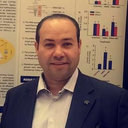Development of cardiac hypertrophy by sunitinib in vivo and in vitro rat cardiomyocytes is influenced by the aryl hydrocarbon receptor signaling pathway.
الكلمات الدالة
نبذة مختصرة
Sunitinib (SUN) is a new tyrosine kinase inhibitor that possesses both anti-angiogenic and anti-tumor activities. Although SUN has improved survival rate in cancer patients, cardiotoxicity has been reported as a significant side effect. Several studies suggested a role for the aryl hydrocarbon receptor (AhR) and its regulated genes such as cytochrome P4501A1 (CYP1A1) in the pathogenesis of heart failure and cardiac hypertrophy. To test the hypothesis that SUN induces cardiac hypertrophy through the modulation of AhR, Wistar albino rats were treated for 15 and 30 days with increasing doses of SUN (25, 50, and 100 mg/kg), whereas at the in vitro level, rat cardiomyocyte H9c2 cells were incubated with SUN (1, 2.5, and 5 μM). Thereafter, cardiac hypertrophy parameters were determined at the biochemical, histopathology, and gene expression levels. SUN treatment causes increase in cardiac enzymes, changes in histopathology, and induction in several hypertrophic markers. This was associated with proportional increase in the CYP1A1 gene in a concentration- and time-dependent manner. The direct involvement of AhR in the SUN-induced cardiac hypertrophy in H9c2 cells was supported by the ability of resveratrol, an AhR antagonist, to block the SUN-induced hypertrophy and the ability of SB203580, a novel AhR agonist, to potentiate SUN-induced hypertrophic genes. This is the first demonstration that SUN induces hypertrophic genes in vivo and in vitro rat cardiomyocyte through AhR/CYP1A1-mediated mechanism.



